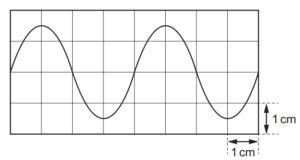Question
A man of mass 75.2 kg uses a set of weighing scales to measure his mass three times. He obtains the following readings.

Which statement describes the precision and accuracy of the weighing scales?
A not precise to \(\pm\, 0.1\) kg and accurate to \(\pm\, 0.1\) kg
B not precise to \(\pm\, 0.1\) kg and not accurate to \(\pm\, 0.1\) kg
C precise to \(\pm\, 0.1\) kg and accurate to \(\pm\, 0.1\) kg
D precise to \(\pm\, 0.1\) kg and not accurate to \(\pm\, 0.1\) kg
Answer/Explanation
Ans: D
The least count of the scale is 0.1 kg, hence it is precise to \(\pm\, 0.1\) kg. Since the readings are varying in each trial, therefore the reading is not accurate to 0.1 kg. Hence the fourth option (D) is correct.
Question
Four possible sources of error in a series of measurements are listed.
1 an analogue meter whose scale is read from different angles
2 a meter which always measures 5% too high
3 a meter with a needle that is not frictionless, so the needle sometimes sticks slightly
4 a meter with a zero error
Which errors are random and which are systematic?

Answer/Explanation
Ans: B
A random error gives different error with each measurement whereas a systematic error gives the same error value in each measurement.
In the first case the error is always different when the scale is read from different angles, hence the error is random.
In the second case the error is always constant hence it is a systematic error.
In the third case the error is random because the needle is sticks some of the times, hence the error is random.
In the fourth case the error is always the same hence it is a systematic error.
Therefore the case 1 and 3 are random errors and case 2 and 4 are systematic errors. Hence the option (B) is correct.
Question
A cathode-ray oscilloscope (CRO) is used to display a sound wave of frequency 2000 Hz.
The display of the CRO is shown.

What is the time-base setting on the CRO?
A 125 µs cm–1 B 250 µs cm–1 C 500 µs cm–1 D 1000 µs cm–1
Answer/Explanation
Ans:A
The time period of the sound wave is given as,
T = 1/f
= 1/2000 = 0.0005 s
From the graph we observe that the wave repeats itself after 4 time base, therefore 0.0005 s is represented by 4 time base hence,
1 time base = 0.0005/4 = 125 µs cm–1 .
Question
What is a reasonable estimate for the density of sand?
A 2 × 102 g cm–3
B 2 × 103 g cm–3
C 2 × 101 kg m–3
D 2 × 103 kg m–3
Answer/Explanation
Ans
D
A reasonable estimate of the density of sand is 2 × 103 kg m–3. Hence the option (D) is correct.
